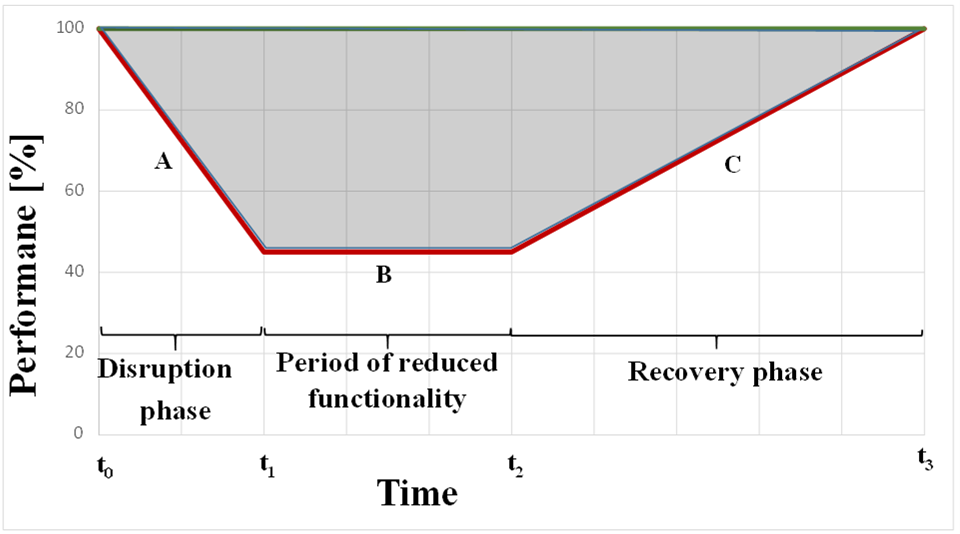
Asset Management Manual
A guide for practitioners!

Asset Management Manual
A guide for practitioners!
Keeping all these aforementioned points in mind, transportation organizations have been developing initiatives to incorporate the concept of resilience into transportation asset management systems for more than 10 years. To that end, the first requirement is to align understanding among engineers on what a resilient transportation infrastructure is (i.e. to establish a robust definition of resilience) and how to measure resilience.
The definition of resilience in transportation infrastructure systems have been discussed in the technical literature (Flannery et al., 2018; Zhou et al. 2019). The literature reveals that most definitions characterize resilience from one or both of the following two perspectives: the ability to maintain functionality under disruptions or deteriorating scenarios, and the time and resources required to restore the level of performance after disruptions. Resilience of transport system may be defined as ability of transport system to prepare for and adapt to major disruption, providing and maintaining an acceptable level of service or functionality and responding to and recovering rapidly from disruption. Following the past work of PIARC Technical Committee E.1 “Adaptation strategies and resiliency”, resilience is “an ability of a system or systems to survive and thrive in the face of a complex, uncertain and ever-changing future. Resilience approach is a way of thinking about both short-term cycles and long-term trends: minimizing traffic disruptions in the face of shocks and stresses, recovering rapidly when they do occur, and adapting steadily to become better and able to thrive as conditions continue to change. Within the context of critical infrastructure, the resilience process offers a cyclical, proactive and holistic extension of risk management practices”.
Therefore, resilience measurement includes time and the ability of the asset is able to perform at after an event occurs and before full functionality is recovered (see Figure 2). Resilience also includes adaptation, which implies recovering the infrastructure to a level above the original, which, again, implies strengthening the infrastructure to face a future with extreme events of greater magnitude, specifically those associated with climate change.
Furthermore, if multiple events of varying sizes are expected within a period of time there is the need to evaluate the maximization of the availability of the services provided by the system over time.

The definition and illustration provided in Figure are consistent with the hypothesis formulated by some researchers that represent resilience as consisting of four contributing factors:
The level of robustness and redundancy are related to performance loss of the transportation system in disruption phase. Robustness measures the ability to withstand disaster-induced damage. Redundancy reflects the availability of alternative resources and at the system level refers to the existence of alternative roads that can provide the service in the event of a disruption or “system priorities that allow for alternative options, choices, and substitutions under stress” (Bruneau et al. 2003). Resourcefulness and Rapidity together determine the ability to restore functionality in the recovery phase.